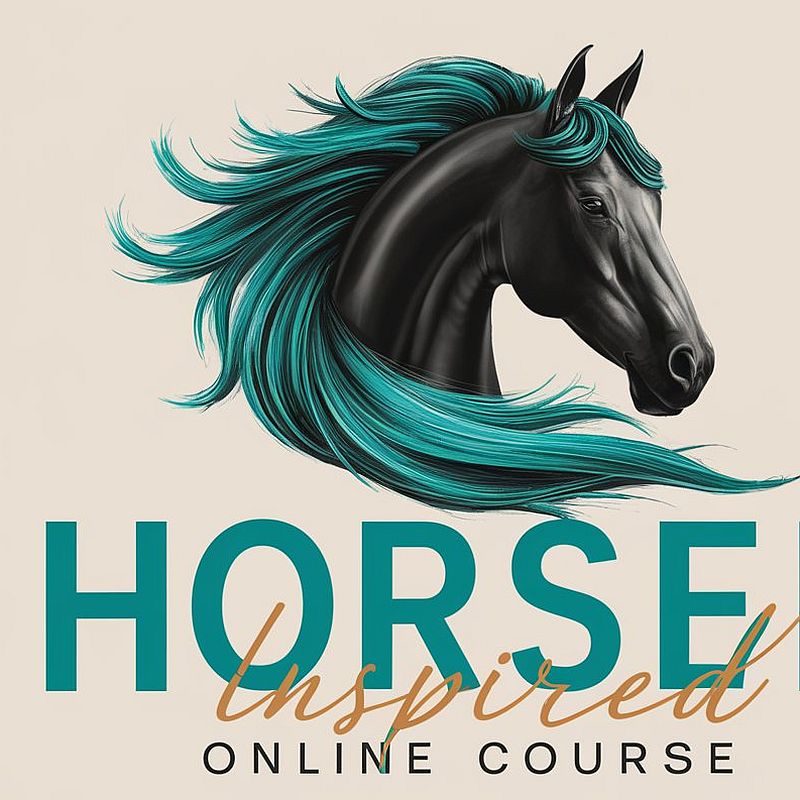©Dr Margaretha Montagu
Introduction: When Size Doesn’t Matter (But Ego Does)
The first time I met a Falabella, I legitimately thought someone had shrunk a horse in the dryer. Standing a whopping 30 inches tall—roughly the height of a particularly ambitious golden retriever—this pint-sized powerhouse trotted toward me with the confidence of Secretariat entering the Kentucky Derby. His name was Napoleon (of course), and within five minutes, he’d stolen my lunch, untied my shoelaces, and established himself as the undisputed ruler of the barn. Falabellas don’t just enter your life; they stage a tiny, perfectly proportioned coup.
Owning a Falabella is like adopting a toddler who never grows up but somehow earns a master’s degree in mischief. They’re the equine equivalent of those small dogs who haven’t realised they’re not wolves—perpetually convinced they’re full-sized horses trapped in build-a-bear bodies. This article is my love letter (and therapy session) dedicated to these “mighty minis” of the horse world, blending history, genetics, and the occasional incident involving a Falabella who learned to open the refrigerator. Let’s explore why these horses aren’t just small—they’re concentrated chaos in a designer package.
1: History and Origins—From Argentine Ranches to Instagram Fame
The Accidental Empire: How One Family Created Horse Hobbits
Unlike most breeds developed for war or work, Falabellas emerged from one man’s obsession with miniaturisation. In the 1840s, Patrick Newtall, an Irishman living in Argentina, noticed unusually small horses in indigenous herds near Buenos Aires. His son-in-law, Juan Falabella, took this genetic quirk and ran with it—selectively breeding the tiniest specimens over generations. Think of it as the Victorian era’s version of creating designer handbag dogs, except these “accessories” could kick you in the shin and mean it.
By the early 1900s, the Falabella family had refined their tiny empire, creating horses small enough to fit in a living room but spirited enough to redecorate it without permission. Unlike ponies (who they deeply resent being compared to), Falabellas are true horses—just severely compressed, like someone hit “reduce by 75%” in Photoshop.
From Novelty to Nobility: The Jet-Set Years
Falabellas became the must-have accessory for the wealthy and eccentric. President Kennedy received one as a gift. Queen Elizabeth kept a pair at Buckingham Palace (presumably to confuse the corgis). By the 1970s, they were appearing in circuses, commercials, and the occasional yacht party—because nothing screams “I’ve made it” like a horse you can transport in a minivan.
Modern Fame: TikTok’s Tiniest Stars
Today, Falabellas dominate social media like benevolent dictators. Videos of them wearing costumes, “helping” with yard work (translation: stealing tools), and photobombing wedding pictures rack up millions of views. They’ve mastered the art of being simultaneously adorable and insufferable—a combination the internet finds irresistible.
2: Anatomy of Adorable Chaos—Small Horse, Huge Science
The Falabella “Look”: Perfectly Proportioned Pandemonium
A proper Falabella isn’t just a shrunken horse—they’re meticulously crafted miniatures with correct proportions. They stand between 28-34 inches (71-86 cm) at the withers, weigh roughly 70-100 pounds, and come in every colour imaginable: bay, black, pinto, appaloosa, and the occasional “what happened here?” spotty pattern. Their heads are refined, their legs are delicate, and their expressions perpetually say, “I may be small, but I’m judging your life choices.”
The Genetics of Going Small
Unlike dwarfism (which causes disproportionate features), Falabellas result from generations of selective breeding for miniature size while maintaining horse proportions. Scientists speculate their ancestors carried natural dwarfing genes, which the Falabella family amplified through careful selection—basically playing God with horse DNA for 150 years. The result? Creatures with the skeletal structure of horses, the metabolism of hamsters, and the appetites of competitive eaters.
Conformation: When Every Inch Counts
Breeders obsess over proportions like Renaissance sculptors. The ideal Falabella has a refined head, straight legs, a level topline, and “presence”—that indefinable quality that makes you forget they’re the size of a large dog until they bite your knee. Poor conformation (stubby legs, oversized heads, potbellies) suggests unethical breeding, where size trumped quality. Good breeders will lecture you about cannon bone measurements for hours. (Ask me how I know.)
Health & Longevity: Small But Mighty (Except When They’re Not)
Falabellas can live 40+ years—longer than most horses—which means you’re essentially adopting a lifetime commitment that requires a will and estate planning. They’re prone to dental overcrowding (imagine 32 teeth in a mouth built for 20), obesity (see: the metabolism of a hummingbird with the discipline of a golden retriever), and occasional cardiac issues due to their miniature organs. Also, their tiny hooves require meticulous farrier work—finding someone who’ll look after something the size of a teacup is its own adventure.
Movement: Trotting Like They Own the Place
Watching a Falabella trot is like seeing a windup toy gain sentience. Their legs blur in rapid, determined strides, manes bouncing, as they cover ground with shocking speed. They move with the urgency of someone late to brunch—which, given their treat obsession, they metaphorically always are.
“Falabellas prove that evolution has a sense of irony: They gave us horses small enough to cuddle, but too stubborn to carry.” – Dr M Montagu
3: Personality—Napoleonic Complex Sold Separately
If regular horses are dogs you can ride, Falabellas are cats who occasionally tolerate harnesses. They’re intelligent, opinionated, and utterly convinced of their superiority despite needing a stepladder to see over a fence.
Take my friend’s Falabella, Duchess. She’s 32 inches of pure disdain. When introduced to a visiting Clydesdale (19 hands of gentle giant), Duchess marched up, bit his ankle, and stole his hay net. The Clydesdale looked baffled. Duchess looked victorious. Falabellas don’t have size anxiety—they have size amnesia.
The Houdini Gene
These horses are escape artists with PhDs in chaos. Gates, latches, and padlocks are mere suggestions. I once watched a Falabella named Houdini (I’m sensing a theme) unscrew a bolt, shimmy under a fence, and liberate the neighbour’s chickens—all before breakfast. When confronted, he blinked innocently, as if to say, “Prove it was me.”
Velcro Horses with Boundaries
Falabellas bond intensely—on their terms. They’ll follow you around demanding scratches, then ghost you for three days if you dare trim their mane wrong. They’re affectionate but mercurial, like tiny, furry senators who remember every slight. My farrier calls them “therapy horses with commitment issues.”
Intelligence: Too Smart for Everyone’s Good
Teaching a Falabella tricks is easy. Living with a Falabella who’s learned tricks is exhausting. They master tasks—opening gates, stealing car keys, turning on hoses—then weaponise them. One owner taught hers to ring a bell for treats. The horse rang it 47 times in an hour. The owner disconnected the bell. The horse learned to knock on the door.
Recent Insight: “Falabellas don’t need obedience training—they need diplomatic negotiations and a really good lawyer.”
4: Versatility—More Than Just Lawn Ornaments
Despite being banned from riding (unless you’re a toddler or fairy), Falabellas are shockingly versatile. They’re the Swiss Army knives of the equine world—if Swiss Army knives were 30 inches tall and judging you.
Driving: Their True Calling
Falabellas excel at pulling carts and mini-carriages. Watching them in harness is like seeing a wind-up toy gain sentience—they lean into the work with surprising power, their tiny hooves churning like pistons. Competitive drivers parade them at shows, where they perform intricate obstacles and side-eye the larger horses with visible contempt. (Pro tip: Never tell a Falabella they’re pulling a “toy” cart. They will remember.)
Agility and Obstacle Courses
Yes, Falabellas can jump—roughly the height of a large pizza box, but with Olympic levels of determination. They navigate obstacle courses, weave through poles, and occasionally decide mid-course to stage a sit-down strike if they spot treats elsewhere. My friend’s Falabella once paused during a timed event to scratch his butt on a jump standard. He didn’t win, but he made a statement.
Therapy Work: Tiny Healers with Big Hearts
Their size makes them perfect for visiting hospitals, nursing homes, and schools. Children light up around them; patients relax stroking their velvety noses. Falabellas seem to sense vulnerability, softening their chaos for those who need gentleness. (Then they’ll immediately steal a nurse’s clipboard. Balance.)
Show Ring Divas
Halter classes for Falabellas are pure theatre. Owners groom them to perfection, braiding manes with ribbons, polishing hooves until they gleam. The horses prance into the ring like runway models, fully aware they’re stunning. Judges critique conformation while the Falabellas critique them. It’s mutual judgment, elegantly choreographed.
Pop Culture: Accidental Celebrities
Falabellas cameo in films, commercials, and that one cologne ad where they symbolised “freedom” (despite being physically incapable of running away from anything faster than a brisk walk). Directors love them for “cute factor,” though trainers joke that getting them to hit their marks requires snacks, patience, and occasionally a good therapist.
“Falabellas are proof that you don’t need to be big to have presence—just audacity and a really gorgeous mane.” Dr M Montagu
5: Caring for a Falabella—Tiny Horse, Giant Responsibility
Owning a Falabella is like parenting a precocious child who never learns consequences. Their needs are specific, their opinions are loud, and your life will revolve around preventing them from doing something catastrophically adorable.
Fencing: Fort Knox, But Make It Cute
Standard horse fencing is a joke to Falabellas. They squeeze through gaps, jump low rails, or simply wait for you to turn your back and open the gate themselves. Experts recommend no-climb mesh, hot wire, and a perimeter of motion-sensor cameras. (I’m only half-joking.)
Diet: The Eternal Struggle
Falabellas get fat looking at grain. Their metabolism is calibrated for scarcity, meaning a handful of oats transforms them into roly-poly sausages. My vet’s exact words: “If it’s not weighed hay and air, your horse becomes spherical.” They’ll scream about this injustice, loudly, at 5 a.m. Earplugs help. Wine helps more.
Grooming: Spa Days for Pocket Ponies
Their coats require regular brushing—not because they’re high-maintenance, but because they shed like Tribbles. Their manes tangle into abstract art installations. Their hooves need trimming every 6-8 weeks, ideally by a farrier who specialises in tiny feet and doesn’t mind being criticised by a horse who weighs less than a bale of hay.
Shelter: Think Dog House, But Fancier
Falabellas need protection from weather—rain, cold, and sun. They’re too small to regulate body temperature like full-sized horses. Many owners build heated barns with radiant floors and climate control. Yes, your Falabella will have better amenities than you. No, they won’t be grateful.
Companionship: The Loneliest Falabella Is a Problem Falabella
They’re herd animals who need company—preferably another Falabella, though some befriend goats, sheep, or very patient dogs. Solo Falabellas develop neuroses rivaling a character in a Woody Allen film. Mine once befriended a rooster. They’d share meals. The rooster crowed; the horse whinnied. It was weird, but they were happy.
“Budget for three things: specialised vet care, industrial-strength fencing, and therapy for when your horse outsmarts you.” Dr M Montagu
6: The Falabella Community—Small Horses, Big Opinions
The Falabella world is a tight-knit universe of passionate enthusiasts who’ll debate bloodline purity with the intensity of Renaissance scholars. Online forums buzz with questions: “Is 35 inches still a Falabella?” “Cart racing: cruel or cardio?” Meanwhile, actual Falabellas are plotting Houdini-level escapes.
Registry Wars: Who’s a Real Falabella?
Multiple registries claim authority: the original Falabella Family in Argentina, the Falabella Miniature Horse Association, and countless regional clubs. Requirements vary—some demand pure Argentine bloodlines; others accept miniatures meeting size/proportion standards. Breeders split hairs (sometimes literally, over mane thickness). It’s Real Housewives meets National Geographic.
Global Tribes: From Ranches to Royalty
In Argentina, Falabellas roam estates like tiny nobility. In the U.S., they’re suburban pets, living in backyards with custom-built barns. In Europe, they’re fashion accessories, attending garden parties in hand-knitted sweaters. (Yes, really. I have photos.) Each culture projects different values onto these horses, who remain blissfully unaware they’re symbols of anything except “Feed me now.”
Controversies: When Cute Becomes Problematic
Overbreeding for extreme smallness has consequences. Some breeders prioritise size over health, producing horses with weak legs, dental disasters, and shortened lifespans. Ethical advocates push for “functional” Falabella—small, yes, but sound and proportionate. As one breeder snapped during a heated Facebook debate, “A Falabella shouldn’t need orthopaedic shoes at age three!”
The Rescue Movement: Tiny Horses, Big Problems
Shelters report rising Falabella surrenders—impulse buys from people expecting living stuffed animals. Newsflash: They’re horses. They live decades, require specialised care, and cost thousands annually. Rescues overflow with obese, neglected, or neurotic Falabellas awaiting experienced adopters. If you’re considering one, foster first. Please.
7: The Joys and Jitters of Ownership
Owning a Falabella is 70% delight, 20% exasperation, and 10% “How did you even DO that?”
Pros: They’ll Steal Your Heart (and Everything Else)
Falabellas bond deeply, greeting you with joyful whinnies and shameless begging. They’re entertaining—watching them “help” with chores is comedy gold. They’re portable: road trips, camping, even RV life are possible. And they’re conversation starters. Nothing breaks ice like explaining why you’re walking a horse on a leash through a park.
Cons: Your Sanity Will Waver
They’re expensive—vet bills rival human healthcare. They’re destructive—mine once ate the wiring in my lawnmower. (Yes, the entire lawnmower.) They’re loud—tiny horses have disproportionately large lungs. And they’re escape-prone. I’ve retrieved mine from a neighbour’s pool, a church parking lot, and once, inexplicably, the roof of a shed.
Escape Chronicles: A Memoir in Panic
Every Falabella owner has a “Remember when…” story involving their horse’s jailbreak. Mine include: Napoleon leading a parade of free-range chickens through town; Duchess trapped in a compost bin (her own fault); and Pippin, who somehow teleported into a locked feed room and ate until spherical. We found him napping, surrounded by evidence, utterly unrepentant.
Is a Falabella Right for You?
Only if you:
- Have secure fencing (and a backup plan)
- Accept that you’ll be outsmarted regularly
- Can afford specialised care
- Want a companion, not a riding horse
- Have the patience of a saint with the humour of a comedian
“Adopt a Falabella if you want a lifelong friend. Buy two if you value your property staying intact.” Dr M Montagu
8: The Future of Falabellas—Preservation and Peril
The breed faces crossroads: maintain purity or risk genetic collapse? Expand globally or preserve Argentine heritage? These questions divide communities while Falabellas, oblivious, continue plotting world domination.
Genetic Concerns: Too Small, Too Fast
Breeding for extreme miniaturisation risks inbreeding depression. Some lines show increased cardiac issues, shortened lifespans, and structural weaknesses. Progressive breeders advocate outcrossing to similar miniatures, horrifying purists who clutch their pedigree charts. As one geneticist noted, “You can’t shrink forever without consequences. Biology has limits.”
New Roles: Therapy, Education, and Entertainment
Falabellas increasingly serve as therapy animals, visiting hospitals where their size allows bedside interactions impossible with full horses. Schools use them for educational programs—teaching kids responsibility, biology, and why you shouldn’t feed horses candy. (Spoiler: They will, and chaos ensues.)
Technology: DNA Testing Saves the Day
Modern breeders use genetic screening to avoid inherited issues, tracking bloodlines with precision. Some even use embryo transfer, allowing elite mares to produce multiple foals yearly. It’s science fiction meets horse breeding—and it works.
Ethical Advocacy: Size Isn’t Everything
The mantra shifts from “smaller is better” to “sound is essential.” Responsible breeders prioritise health, longevity, and temperament over record-breaking heights. Registries tighten standards, rejecting horses with obvious defects. The goal? Falabellas who are small, yes—but happy, healthy, and capable of living full lives without orthopaedic interventions.
9. Conclusion: Why Falabellas Steal Hearts (and the odd Snack)
I’ll never forget the day Loki, my first Falabella, escaped and “helped” the UPS driver by untying his shoelaces. As the driver laughed, Loki stole a package (containing, ironically, horse treats). That’s the Falabella magic: catastrophic yet endearing, chaotic yet lovable.
They’re not horses—they’re living paradoxes. Too small to ride but too proud to care. Fragile enough to need coats but tough enough to boss around German Shepherds. They’re comedians, therapists, and occasional criminals, wrapped in velvety coats and armed with hooves the size of shot glasses.
Owning one teaches humility (they’ll humble you), patience (you’ll need it), and the importance of laughter (you’ll cry otherwise). In a world obsessed with bigger, faster, stronger, Falabellas remind us that impact isn’t measured in inches—it’s measured in audacity, heart, and the sheer number of times you have to chase them through the neighbourhood.
As I write this, Loki is outside, attempting to open the garden gate with his teeth. He’ll succeed. He always does. And I’ll sigh, grab a lead rope, and marvel at how something so small can occupy so much space in your heart—usually while simultaneously occupying the space where your tomatoes used to be.
Final Line: “Falabellas don’t just leave hoofprints on your property. They leave them on your soul—and your credit card statement.” Dr M Montagu
And breathe. As tiny hooves clatter into the distance.
Falabella Horse Frequently Asked Questions (FAQ)
1. What exactly is a Falabella horse?
A Falabella is the world’s smallest horse breed (not a pony!), standing between 28-34 inches (71-86 cm) at the withers. Developed in Argentina through selective breeding over 150+ years, they maintain horse proportions despite their miniature size. They’re true horses with correct conformation—just concentrated into a package that weighs roughly as much as a large dog.
2. Can you ride a Falabella horse?
No, Falabellas are too small and delicate for riding, even by children. Their skeletal structure can’t support rider weight without risking serious injury. However, they excel at driving (pulling small carts), agility courses, and therapy work. Think of them as “show horses” or “companion horses” rather than riding horses.
3. How long do Falabella horses live?
Falabellas can live 40-45 years with proper care—significantly longer than full-sized horses. This makes them a serious long-term commitment. Their longevity requires financial planning for decades of veterinary care, dental work, and specialized needs. Essentially, you’re adopting a family member who’ll likely outlive your career.
4. What do Falabella horses eat?
Falabellas require carefully managed diets to prevent obesity. They thrive on:
- Measured portions of grass hay (avoid alfalfa—too rich)
- Limited grazing time (1-2 hours daily)
- Minimal grain or concentrates
- Regular access to fresh water
- Salt/mineral blocks
Their metabolism is extremely efficient, meaning they gain weight easily. Overfeeding is the #1 health issue owners face. Think “hamster metabolism in a horse body.”
5. How much does a Falabella horse cost?
Prices vary wildly based on lineage, conformation, and training:
- Pet-quality: $1,500-$3,000
- Show-quality: $5,000-$15,000
- Champion bloodlines: $20,000+
However, purchase price is minor compared to ongoing costs: specialised farrier work, veterinary care, fencing, shelter, and feed can total $2,000-$5,000+ annually. Budget accordingly.
6. What kind of shelter and space do Falabellas need?
Despite their size, Falabellas have specific requirements:
- Minimum ½ acre pasture (preferably more)
- Shelter from weather (they can’t thermoregulate like full-sized horses)
- Secure fencing—minimum 4 feet high with small gaps (they’re escape artists)
- Companionship (another Falabella, goat, or livestock)
- Protection from predators (dogs, coyotes)
Think “large dog with specialised horse needs.” They’re adaptable to smaller properties but require proper infrastructure.
7. Are Falabellas good with children?
Yes and no. Falabellas are generally gentle and patient, making them excellent for supervised interactions. However:
- They’re too small for riding
- They can kick/bite if mishandled (like any horse)
- They require knowledgeable handling, they’re not “beginner-friendly”
- Children must learn proper equine respect
Best for families with horse experience or a willingness to learn proper care and handling techniques.
8. What health issues are common in Falabellas?
Breed-specific concerns include:
- Dental overcrowding (too many teeth, too small mouth)
- Obesity and metabolic disorders
- Cardiac issues (due to miniature organs)
- Dwarfism (in poorly bred specimens)
- Cold/heat sensitivity (poor thermoregulation)
- Hoof problems (requiring specialised farrier care)
Reputable breeders screen for genetic issues. Regular veterinary care is essential, as many vets lack experience with miniature horses.
9. Can Falabellas be house-trained like dogs?
Technically possible but highly impractical and not recommended. Falabellas are horses—they require outdoor space, pasture access, and companionship. While some owners bring them inside briefly (usually for social media content), they need proper equine housing. Attempting to keep them as “indoor pets” is both unethical and impractical.
10. What’s the difference between a Falabella and other miniature horses?
Key distinctions:
- Heritage: Falabellas trace to specific Argentine bloodlines developed by the Falabella family
- Proportions: True Falabellas maintain correct horse proportions (not dwarfism)
- Size: Slightly smaller than some mini breeds (28-34″ vs up to 38″)
- Registry: Must meet specific FMHA (Falabella Miniature Horse Association) standards
- Temperament: Often more refined, sensitive disposition
All Falabellas are miniature horses, but not all miniature horses are Falabellas. It’s like squares and rectangles—a specific subset of the larger category.

Write Your Way to Serenity: A Guided Journaling Retreat Inspired by Horses for anyone interested in increasing their emotional, physical and social resilience by starting a journal, but does not have much time to invest and is looking for a simple, low-cost, easy-to-implement strategy that gives tangible and lasting results. Get immediate access

The Compassionate Insight-giving Guide to Getting Over the Loss of Your Horse – an Online Course – find support, guidance, and practical tools to navigate the complex emotions and challenges associated with the loss of a heart horse. Get immediate access

The Harness the Healing Power of Your Horses – Become a Mindfulness Meditation Teacher and Create Substantial and Sustainable Income with Your Horses- an Online Teacher Training and Create a Closer Connection to Your Horse Get immediate access

“I am an experienced medical doctor – MBChB, MRCGP, NLP master pract cert, Transformational Life Coach (dip.) Life Story Coach (cert.) Stress Counselling (cert.) Med Hypnotherapy (dip.) and EAGALA (cert.) I may have an impressive number of letters after my name, and more than three decades of professional experience, but what qualifies me to excel at what I do is my intuitive understanding of my clients’ difficulties and my extensive personal experience of managing major life changes using strategies I developed over many years.” Dr M Montagu

